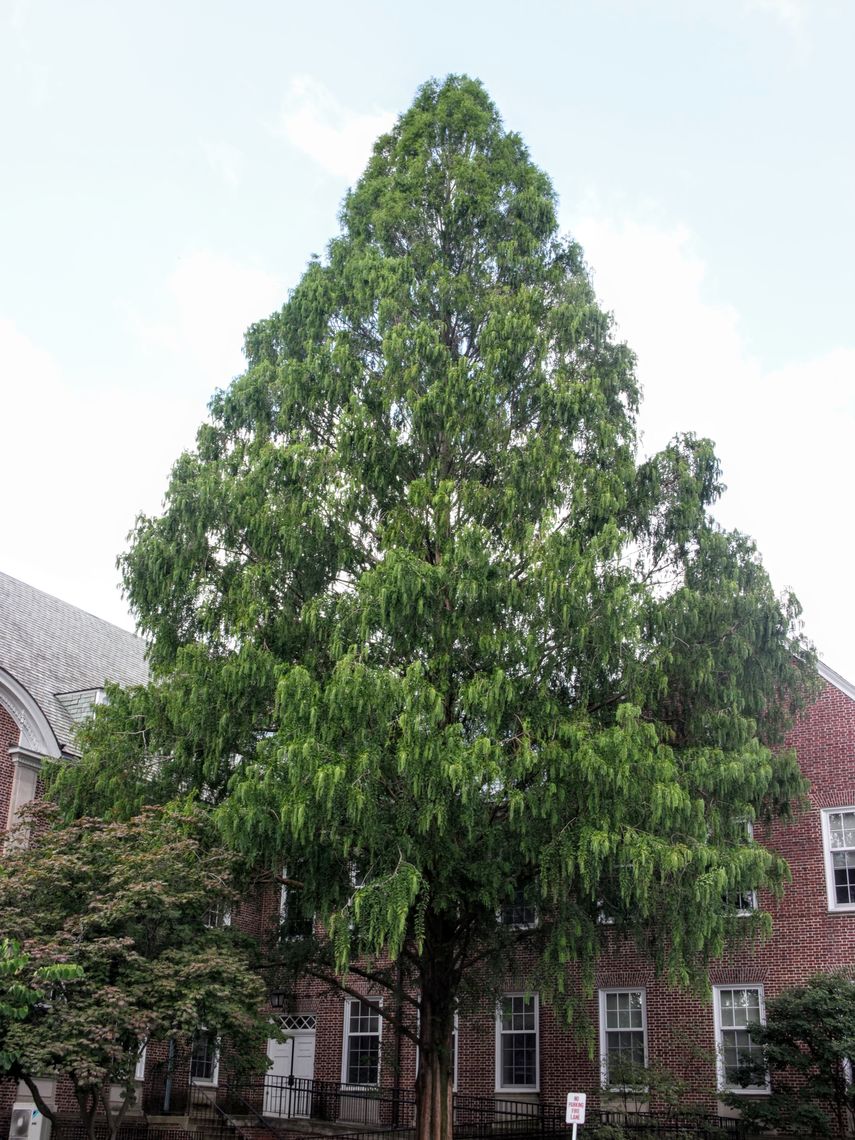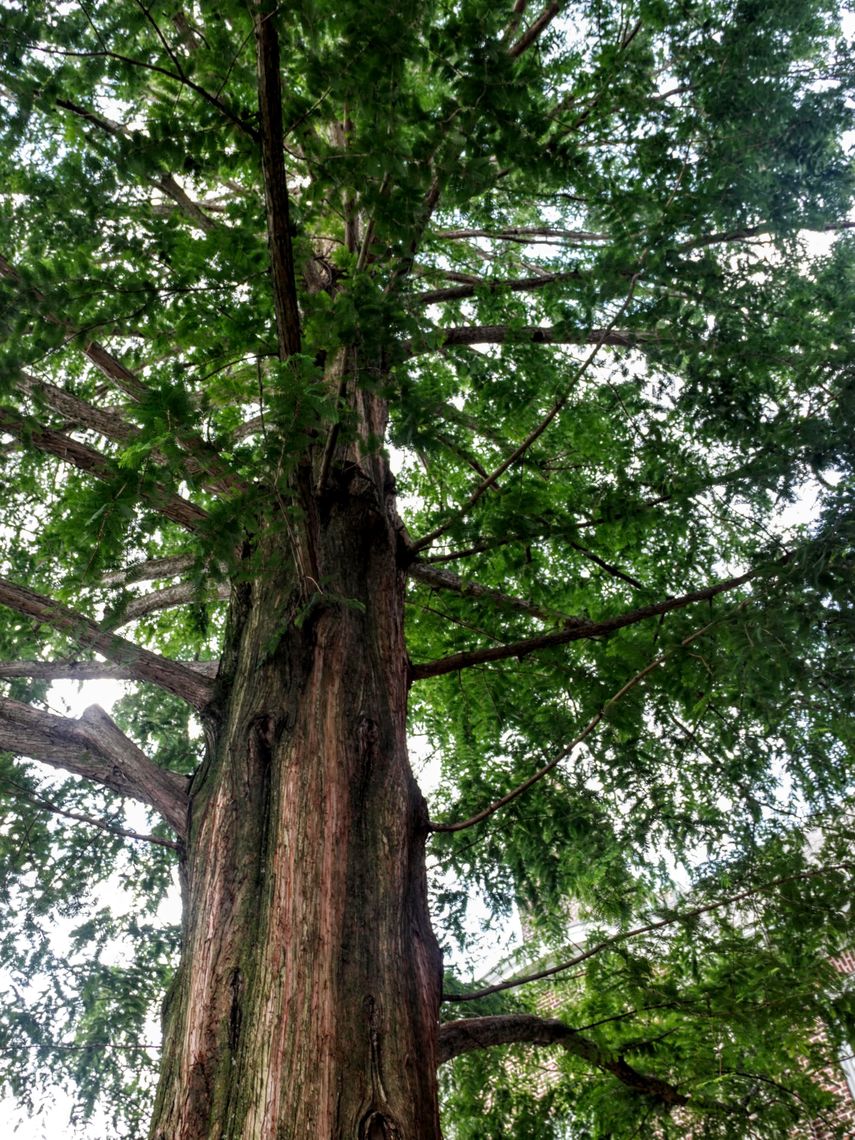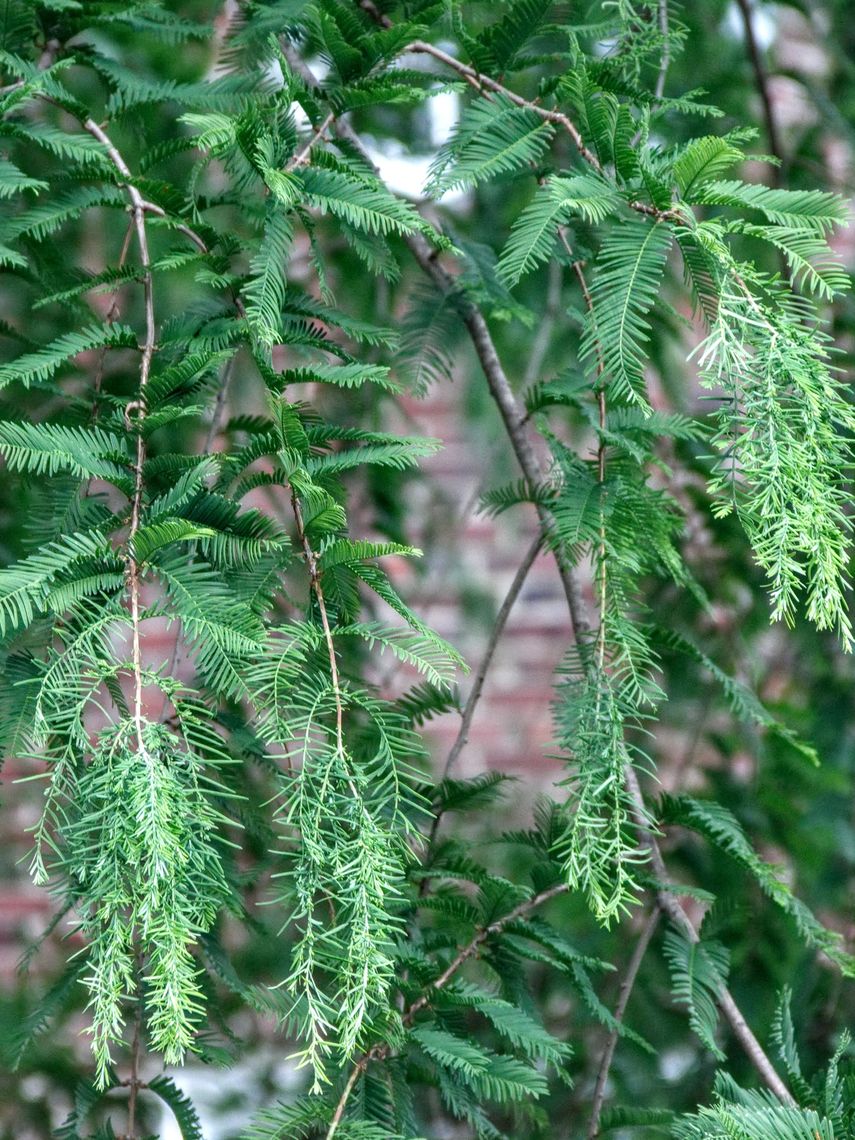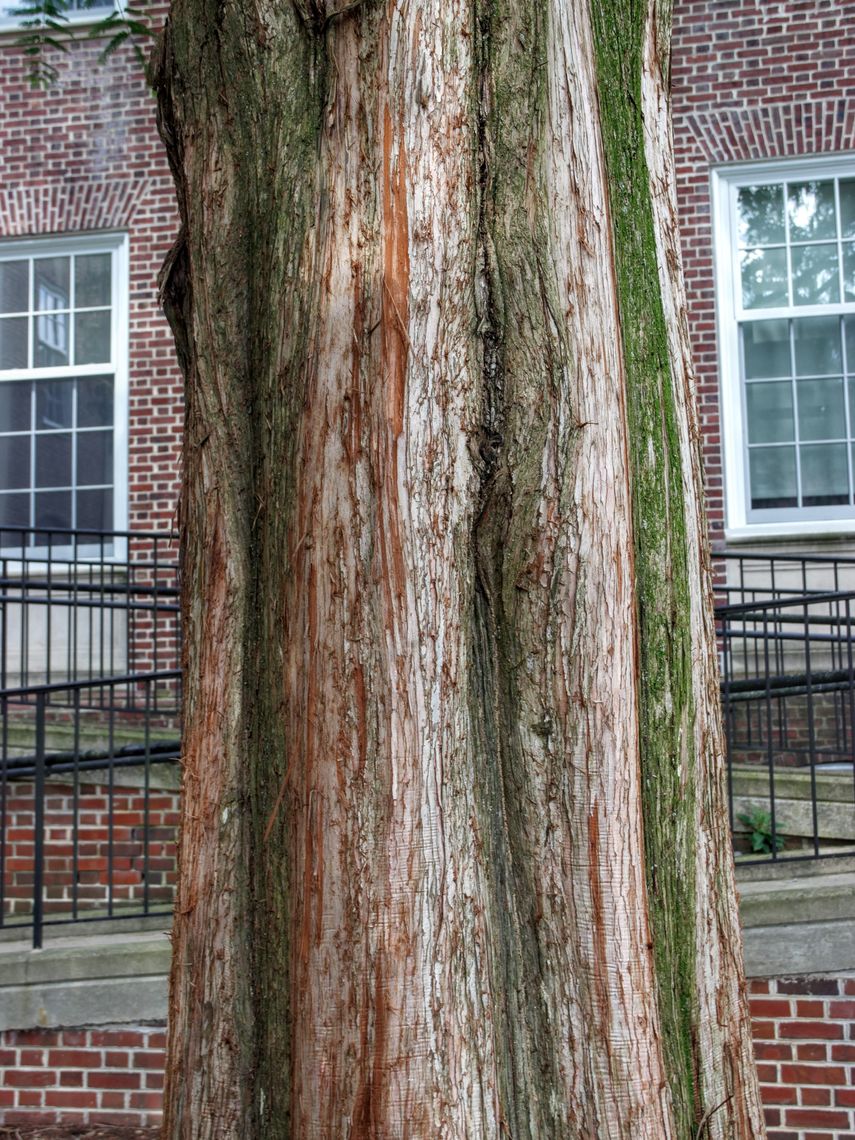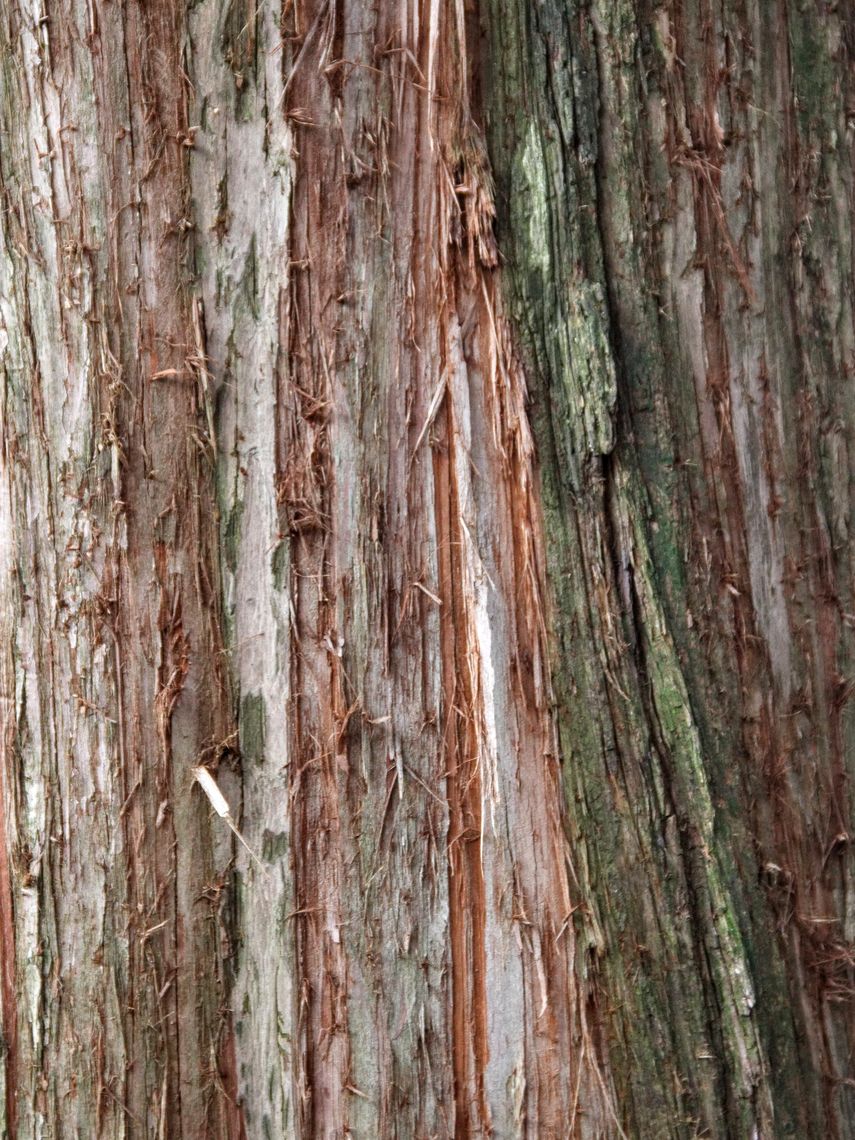Dawn Redwood (Metasequoia glyptostroboides)
The dawn redwood is a pyramidal conifer that can grow up to 100 feet high. It has feathery and soft-to-the-touch needles which are green in the summer and turn orange-brown in the fall. This tree differs from the majority of conifers, since it loses its needles seasonally. Fossil records show that the dawn redwood may have existed up to 50 million years ago. However, it was not until 1941 that it was discovered by humans near the town of Modaoqi, China.
Family: Cupressaceae (Cypress)
Characteristics: The half-inch-long needles are feathery and bright green. In the fall, the needles turn an orange-brown to red-brown and fall from the tree in early winter. Female cones are oval and light brown while male cones are round and hang from branches. Bark is a red-brown, fissured, and exfoliates into long strips. With age, the trunk broadens at the base and develops intricate fluting. This tree has a pyramidal shape. It grows 70-100 feet high and 25 feet wide.
Foliage: Deciduous (leaves lost seasonally)
Geographic Origin: Central and western China (non-native)
Cultivation Notes: Requires low maintenance. Does best in full sun. Prefers acidic, moist, and well-drained soils, though can tolerate clay and wet soils. This tree is also tolerant to air pollution. Plenty of room should be given when planted, since the tree gets very large.
Number on Campus: 5
Sources: Dirr, Morton Arboretum, Missouri Botanical Garden

